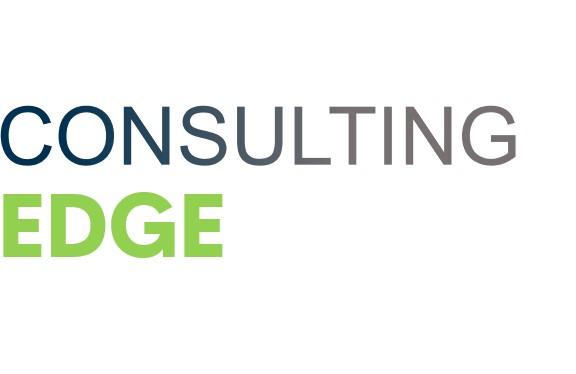Team building, developing a business strategy, and constructing a company culture are high-energy endeavors requiring a lot of energy. There is no such thing as an ultimate result. But rather an unlimited variety of opportunities for growth and development, as well as measures by which success may be measured at various points along the way.
As your company grows in both size and complexity, there will be times when you will need to rethink the way you handle your strategic planning/priorities and employee development. Here are some suggestions.
It’s essential to be prepared:
The key to a successful strategic planning process is to figure out what information you need to make good decisions. If you want to come up with new ideas. You need to look outside of your organization and the knowledge of your tribe. As required, gather feedback from employees, clients, customers, suppliers, partners, and other stakeholders in the project.
Comparing yourself to other organizations with the same goal or service delivery scope is essential for getting internal data. It can help you think about strategic issues. Strategic planning experts are usually the best people to gather and prepare this kind of information. Make sure you have an idea of your organization’s strengths and weaknesses by having a 360-degree view of things.
Establish a schedule for regular evaluations:
Just before you go from your strategic planning retreat, double-check that everyone is using the same calendar for at least four review sessions every year. Review sessions should be brief, held off-site, and limited to discussing goals and progress toward goals. They should not have any other items on their person.
It’s essential to make a guest list:
There are times when you have to sit through a meeting that doesn’t have anything to do with your job. If there are people at a meeting who can’t make decisions or participate in the discussion, they don’t need to be there. To show that you care about other people’s time and energy, only invite the most important people to the party.
To see if the person who was supposed to go to the meeting can send someone else from their team instead, ask them. Then, if that person is significant, postpone the discussion until the right time so that you can be sure it will work.
Creating a place where people can work together:
It can save money and be more efficient if a soda company changes the design of its soda cans, so they do it. The top people think it’s a great idea, so they go ahead and do it. In order to make up for their lack of knowledge, the marketing team keeps up with their branding and marketing efforts from the past.
Unfortunately, manufacturing changes were made when the problem was found, which led to the company losing money. If the company had held a strategy review meeting, it might have been able to avoid this.
Allow for some room for expansion:
Your facilitator, such as a teacher standing in front of a class, may like to speak about a query or a subject with the group. Afterward, urge participants to jot down any thoughts they have that are not connected to the topic at hand. So that, they might bring them up when the meeting is finished.
Be confident that your meeting facilitator possesses the tools and agility to keep the group on track. While it also changes the subject when required.
Each section should be assigned a specific time slot:
Set a time limit for each of the subjects you want to address in your appointment before you start strategic planning what you’ll talk about. When discussing issues like brainstorming, mitigating potential problems, or providing a more thorough explanation and explanation, allot a lot of time to those that are more significant or difficult.
Be conscious of time and always assume that everything on your to-do list will take longer than it does. To facilitate any last-minute inquiries or discussions, you should do so in this manner. If you want to be focused and productive, you need to do each task at a predetermined time each day.
Increasing openness and transparency:
People at every level of the company are kept up to date on the company’s plans through strategy review sessions. So that the leadership can help ease the inevitable problems, they cut through the unavoidable force fields. Because of strategy review meetings, each department has to show that it is making progress toward the organization’s goals and that it is working hard to do so.
Spend some time together thinking about the broader picture:
Even the most essential strategic talks can be squeezed into a half-day meeting. Because we all have a lot to do, it’s understandable that we don’t have enough time to do everything.
To be a good leader, you need to use your time wisely so that your meetings are productive. Putting in the time is worth it. Learning new things will take time, getting your team on board, and thinking about the big picture to make a strategic plan.
Regular team and board meetings could also prepare everyone for a full or half-day seminar, but this isn’t the only way. Board meetings should be changed to show presentations on stakeholder input, financial and service trends, and other important information.
Hire a third person to work as a facilitator:
In this case, an outside facilitator can help keep your team on track and remove any personal biases that could make your plan go off track. It would be best if you chose a facilitator knowledgeable about the design field and has a lot of information about your company, your markets, your clients, and all of your previous strategic planning projects. Do not let the facilitator write your plans. Instead, each member of your team should write their plan of action.
Asking the difficult questions:
Simple to say, hard to do. There are a lot of planning sessions where the most challenging part is when I ask people to make a firm promise to stop doing something rather than think about it. Do we have any holy cows? What would we do if we could only do one or two things well? Is it essential for this organization to be set up the way it is? How do we think we can’t find a better way to reach our goals because of these assumptions?
Keep a database of all meetings’ issues and decisions:
In either case, make sure someone is recording the meeting. Meeting minutes should be taken as the meeting goes on, if possible. Of course, you’ll have the best record of the meeting if you write it down as it happens. It’s essential to write down critical decisions and tasks in meeting minutes.
Conclusion:
Keeping in mind how much money meetings can cost a company is critical to managing them effectively. Our goal is to assist you in thinking about your calendar and meeting agendas differently, allowing each meeting to run as smoothly as possible.






